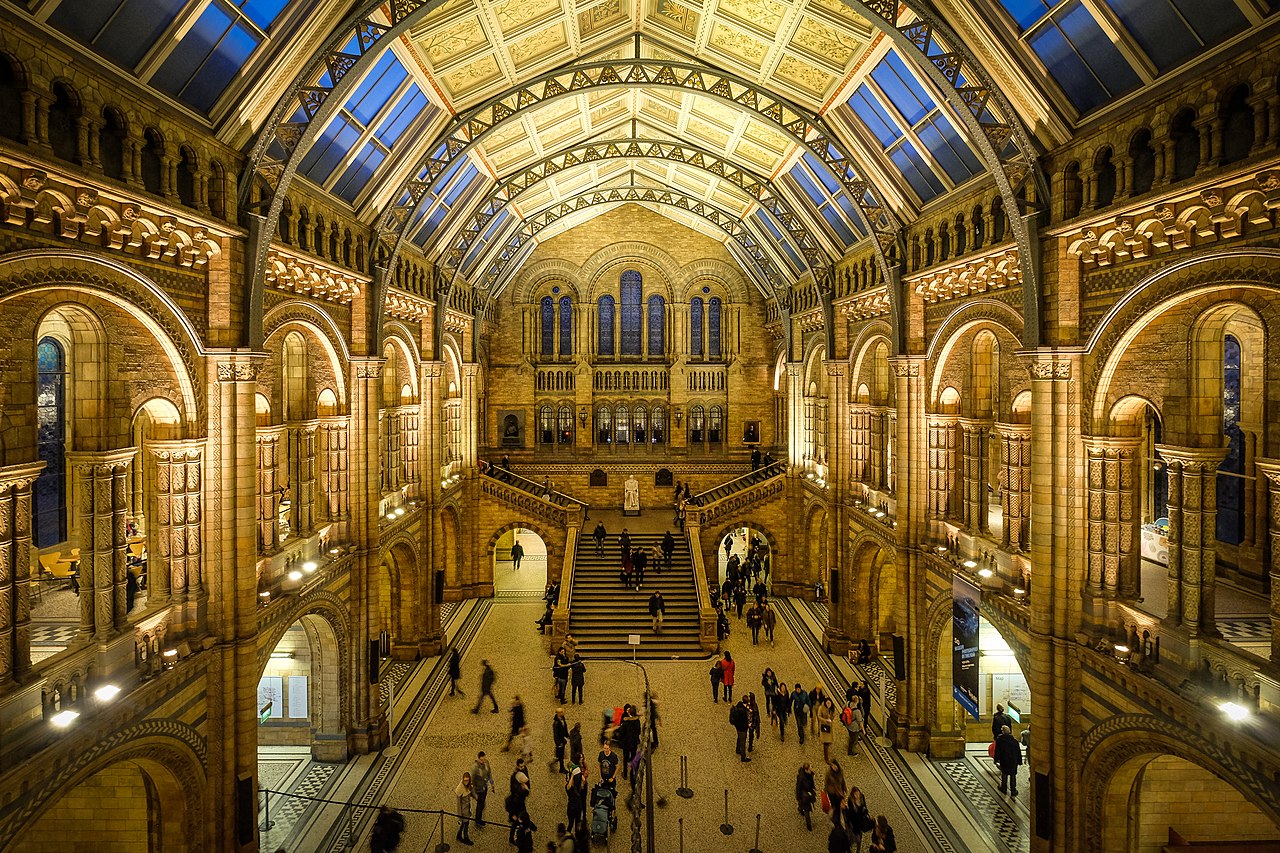
The largest dinosaur ever to walk the Earth has arrived from Argentina at London's Natural History Museum for display. IAG Cargo's specialist department flew it here for its inaugural European showcase. It weighs four times more than Dippy, the museum's beloved diplodocus cast and measures 12 meters longer than Hope, its former resident blue whale skeleton. For this reason, careful planning was required in order to fit it within the gallery space. This is not a giant animatronic dinosaur. It is a real one.
Patagotitan mayorum
Patagotitan mayorum, the largest dinosaur ever seen at the British Museum and an exhibit that took two years to plan, will arrive from Argentina soon. Reconstructed using original material found within diplodocus footprints, its skeleton is over four times bigger than Dippy the diplodocus and 12 metres longer than Hope the blue whale. This week marks the European debut of London's Natural History Museum's giant titanosaur skeleton. Visitors can follow its journey from being just an egg to becoming an adult that could cover an area the size of a small town. In 2010, remains of this enormous plant-eater were discovered by a rancher in Patagonia and then carefully excavated and reconstructed by experts from Argentina's Museum Paleontologico Egidio Feruglio in Trelew. Visitors will find this exhibit an eye-opener as it allows them to imagine life for such immense creatures on Earth.
Size
According to the museum, this titanosaur stands as one of the biggest creatures to ever walk on Earth. It would have weighed as much as nine African elephants yet had much shorter legs - thus becoming an ecological nightmare! Arriving this week in London after being disassembled and packed into 40 crates for shipment by two British Airways planes, Hope made its European debut next spring when displayed at London's Natural History Museum Waterhouse gallery. Four times heavier than Dippy the giant Diplodocus which once occupied this space until 2017, and 12 metres longer than Hope the blue whale skeleton that replaced her, Hope stands 18 metres taller. As part of the exhibition, visitors will witness an original Patagotitan bone and fossilised egg from this species, along with being able to handle a cast of its skull and tailbone. They'll also enjoy paintings depicting Cretaceous-era vegetation and fauna—and an artistic rendering depicting life as a titanosaur!
Weight
As one of the largest land animals ever to roam Earth, titanosaurs will make their grand appearance at London's Natural History Museum next March 31-2024 and will dwarf anything previously displayed there. Measuring 57 tonnes, their presence will dominate Waterhouse gallery. The museum collaborated with scientists at Egidio Feruglio Paleontological Museum (MEF) in Patagonia to design this display and will invite museum-goers to consider colossal animals still roaming our planet and how best we can preserve their existence. MEF experts utilized laser scanning technology to reconstruct Giraffatitan's body and calculate its volume, wrapping virtual skin over its bones to estimate weight (one ton equals 2,001 pounds and one tonne equals 1,000 kilograms). Assuming its average mass was about 23 tons (a ton equals 2,008 pounds while one tonne is 1,000 kilograms), they concluded Giraffatitan likely weighed between 23-24 tons.
Origin
Since being transported from Argentina on two British Airways planes, Patagotitan mayorum's cast has been on display at the Natural History Museum. As one of the world's biggest titanosaurs ever found, it weighs as much as nine African elephants. Additionally, four times heavier than Dippy the Diplodocus Skeleton currently at display and 12 metres longer than Hope (Blue Whale currently displayed in Waterhouse Gallery). This skeleton was provided to us from Argentina's Museo Paleontologico Egidio Feruglio museum and transported via 36 crates for transport by plane to Heathrow airport, disassembled prior to flight, then expertly reassembled at our museum where over 225 bone casts were connected by experts like pieces in an enormous puzzle.
The museum hopes the cast will encourage young people to learn more about dinosaurs and other giant creatures, while it remains on display until January 2024 when it will tour across the UK.
MORE ON THE FLASH LIST
































